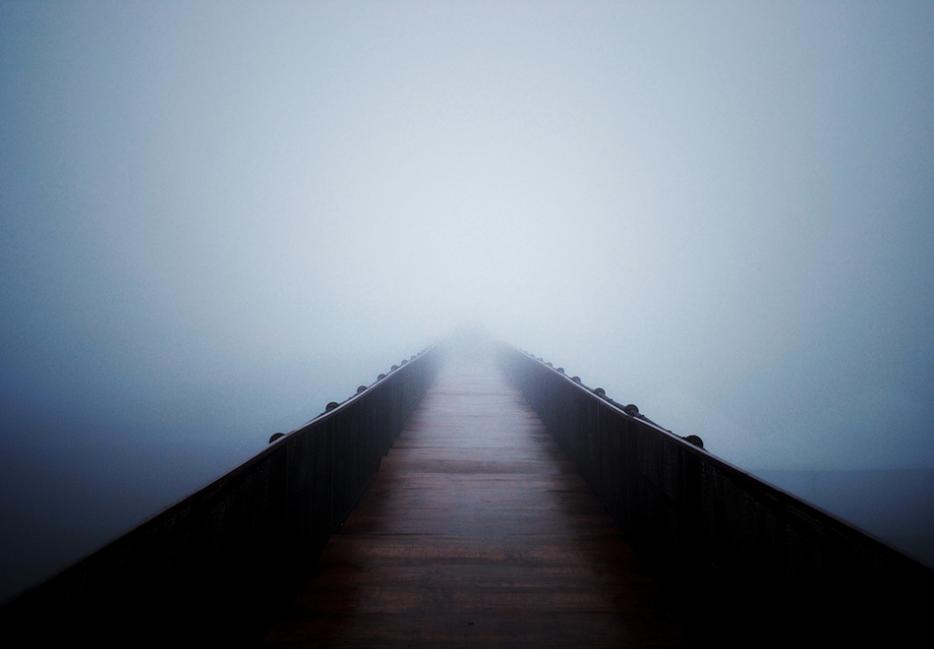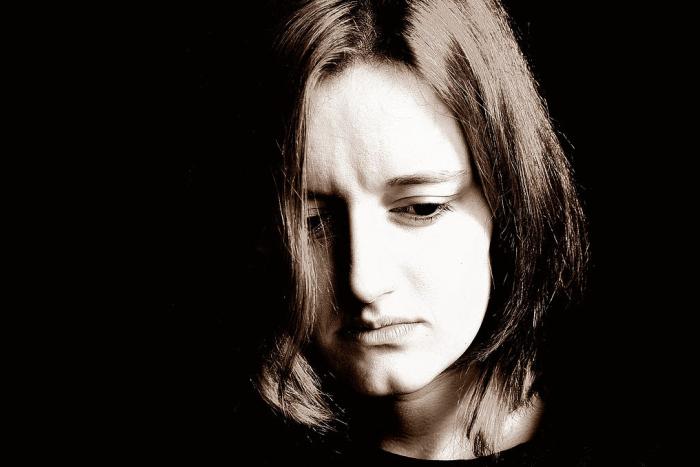When I was young, monsters didn’t frighten me quite as much as scale did. Show me a vampire and I’d shrug; werewolves underwhelmed. But bring me to a museum and show me the body of hundred-foot-long a whale? Cue the tremors and terror sweat. It’s a question of comprehension; these days, a surefire way to spook myself is to call up Wikipedia’s “Timeline of the far future” page and look at some of the events forecasted to happen tens of thousands, or tens of millions, of years from now. It’s something of an endurance test to see how long I can stare at it before I either begin to develop a tension headache or panic outright as I mentally and emotionally prepare myself for the Rockies eroding into a dusty plain or Saturn’s rings reaching the end of their lifespan (50 and 100 million years away, respectively). You get can lost trying to envision things that don’t lend themselves to easy envisioning. There’s a kind of dark, absurdist comedy that comes from wrapping yourself up in worry over fates you will realistically never face, but this can also lead to a particularly rich, viable strain of horror.
Cosmic horror and its manifestations are numerous. In an afterword to the new NYRB Classics anthology Shadows of Carcosa, editor D. Thin discusses stories that “cultivate a state of ongoing suspense that, even when the story is told, should prove next to impossible to dispel.” We’re less in the territory of monsters that can be hunted, and rather in a realm in which the world itself is revealed to have been monstrous all along.
“I love the idea of there being things hidden from the rest of the world, either through outright deceit or through some unlucky bastard not having stumbled across them yet,” the author Nate Southard told me about the appeal of cosmic horror for so many writers. “Maybe those things are old and greater than the regular world and maybe they're not, but I just love tinkering with the idea that there are secret things mankind isn't meant to discover.“ Cosmic horror hits on a different scale than other varieties of horror: consider the ways in which many an H.P. Lovecraft protagonist or narrator is scarred, traumatized, or fundamentally altered by their encounters with powers beyond the comprehension of humanity—literally, in some cases, as with the narrator’s recognition of his own reduced humanity in “The Shadow Over Innsmouth.” Though as Quinn Lester noted in a recent essay for The New Inquiry, Lovecraft’s take on horror dovetails uncomfortably in several places with his racism. The two can be difficult to separate: there’s racism in his dialogue, to be sure, but passages in which non-white characters are described in subhuman terms can also be difficult to read. (Laura Miller, in a 2014 piece for Salon, delved into the contradictory elements of his work.) The fact that Lovecraft’s image adorns the World Fantasy Award is an understandable source of controversy; Sofia Samatar’s thoughts after winning said award in 2014 are worth reading.
Not that cosmic horror begins or ends with Lovecraft. The early 20th century writings of William Hope Hodgson envisioned the end of the Earth in the distant future: 1908’s The House on the Borderland features it in hallucinatory form, while 1912’s The Night Land is set at a point where the sun’s light has dimmed. Hodgson’s influence may not be as widespread as Lovecraft’s, but it does crop up in certain places: the 2007 Doctor Who episode “Utopia,” which featured human civilization fending off monstrous attackers and seeking the promise of a better life on another planet 100 trillion years in the future, comes to mind. The first season of HBO’s True Detective contained a number of nods in the direction of cosmic horror, including Robert W. Chambers’s 1895 The King in Yellow. In an interview with Entertainment Weekly, the show’s creator Nic Pizzolatto observed about his own experiences as a novelist and screenwriter:
In writing, I noticed that Southern Gothic took you smoothly into the “Weird Tale,” whose visions of cosmic horror took you into noir and pulp. The King In Yellow is in there because it’s a story about a story, one that drives people to madness.
A year after that first season ended, a number of works have arrived on bookshelves that connect somewhat with the work done in said season. Shadows of Carcosa features a number of cosmic horror stories, including several—one by Chambers, and one by Ambrose Bierce—that overlap with the work done on the show. (They’ve also released an omnibus of two books by William Sloane under the title The Rim of Morning, subtitled “Two Tales of Cosmic Horror”—though both, as Stephen King points out in his introduction, owe a lot to the classic locked-room mystery.) And Thomas Ligotti, whose book The Conspiracy Against the Human Race was also referenced thematically on the show and directly by Pizzolatto in interviews, has a new omnibus out compiling his first two collections, Songs of a Dead Dreamer and Grimscribe.
Ligotti’s work isn’t always easy to describe. “Temporarily unhooked from the weird,” the author Jeff VanderMeer writes in his foreword to the new Ligotti omnibus, it “is best understood as a continuing interrogation of the legitimacy of our modern lives.” Such is the case for almost all of the stories in this volume: the truths about the world that people discover are enough to tear them apart—sometimes literally. His protagonists often find themselves facing forces far beyond their ability to grapple with or comprehend. The therapist narrating “Dream of a Manikin” is, ultimately, trapped in a series of collapsing realities; what begins as a simple, Twilight Zone-esque twist to the narrative gives way to a series of revelations beside which a simple “everything you know is a lie” would be a comfort. In “The Last Feast of Harlequin,” an academic goes to an isolated Midwestern town to attend an annual festival of clowns and finds something much more sinister afoot: the expected hostility towards outsiders, sure, but also body horror, underground chambers, and ancient rituals. (Plus, sinister clowns.) And in the title novella of My Work is Not Yet Done, office politics turn monstrous as an alienated man uses nightmarish forces to exact vengeance on those he believes have wronged him.
As terrifying it can be to stare into an unknowable void and wonder what the future holds, it’s even scarier to see an indifferent eye looking back and laughing at us.
Not that his work is always grim for the sake of grimness. “The Cocoons,” which appears late in the book, has a demented sense of humor: paranoid patient receives unconventional therapy from a sinister doctor, but his neuroses prompt him to avoid a trap, and the whole thing ends with a bleakly funny final sentence. Ligotti’s sense of horror is both more cerebral and more visceral than most: bodies contort and are transformed, and a veneer of science coats a number of ominous plots. It’s through recognition of what’s about to happen, and of the true nature of the world, that the abject horror of many of these stories manifests itself—an intellectual charge that quickly turns into ominous chills. Lincoln Michel, author of the collection Upright Beasts, referred to Ligotti’s work as “cosmic horror as philosophical aphorism,” an apt description of both the appeal and the occasionally distancing aspects of his fiction.
Regardless, Michel is glad to see Ligotti getting more attention. “[C]osmic horror is a genre with a lot of possibilities but which is totally overshadowed by Lovecraft, who is problematic in a lot of respects,” he told me. “Perhaps there is a connection with how the modern era of data overload and globalization makes us all realize what small dots we are in the sea of the cosmos, but I think it is probably just a case of writers who loved Lovecraft, Ligotti, or others getting more popular and introducing new fans.”
The works of H.P. Lovecraft do still seem to loom large over the space occupied by cosmic horror. Michel noted that his first encounter with cosmic horror was via John Carpenter’s 1994 film In the Mouth of Madness, which blended Lovecraftian lore—humans slowly turning inhuman, ominous New England landscapes—with a plotline that took a turn for the metafictional. Joe Hill and Gabriel Rodriguez’s recently concluded horror comic Locke & Key abounds with nods to Lovecraft, both in the names of places and in a handful of references to supernatural landscapes: the town in which it’s set is named Lovecraft, and Leng, a region referenced in Lovercraft’s fiction, is mentioned. And Alan Moore and Jacen Burrows’s comic Providence is inspired by Lovecraft’s own work as well as critical writings about it. There's also The Ballad of Black Tom, a forthcoming novella from Victor LaValle, will engage directly with both Lovecraft’s Cthulthu mythos and Lovecraft’s own prejudices.
Others, though, have shown it’s possible delve into the territory initially charted by the likes of Hodgson and Lovecraft without borrowing from them outright. Nathan Ballingrud’s short story “Skullpocket” features a sinister belief system, uncannily prolonged lives, and a hidden supernatural society. Change a few names and you could probably turn this into something more Lovecraftian, but—as with the ominous rites in which people dressed as clowns congregate and shed human forms in Ligotti’s “The Last Feast of Harlequin”—it’s much stronger in its own idiosyncrasy. Nate Southard, whose novella He Stepped Through blends aspects of cosmic horror and crime fiction, also noted the works of Laird Barron, who “tells these amazing, soul-wrenching stories, but he doesn't start stringing together consonants or anything like that.” Lovecraft’s worldview may retain its power to horrify, but at this point, it’s also familiar enough that parodies can, and do, hit home.
In a 2014 review of The New Annotated H.P. Lovecraft, John Gray described the cosmic side of the worldview set out in Lovecraft’s fiction.
...the human mind is an accident in the universe, which is indifferent to the welfare of the species. We can have no view of the scheme of things or our place in it, because there may be no such scheme. The final result of scientific inquiry could well be that the universe is a lawless chaos.
That image of an accidental species in an indifferent universe might well chill the hearts of atheists and believers alike. It’s a haunting thing to consider: regardless of our feelings about our place in the world, the vast majority of us would like to leave some sort of legacy, be it cultural, personal, or familial. Cosmic horror, in its scope, sees this and scoffs. As terrifying it can be to stare into an unknowable void and wonder what the future holds, it’s even scarier to see an indifferent eye looking back and laughing at us.






